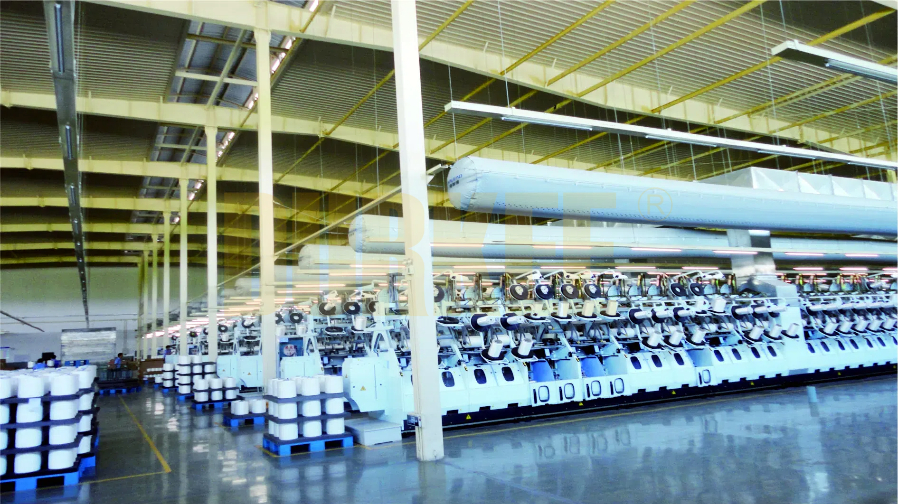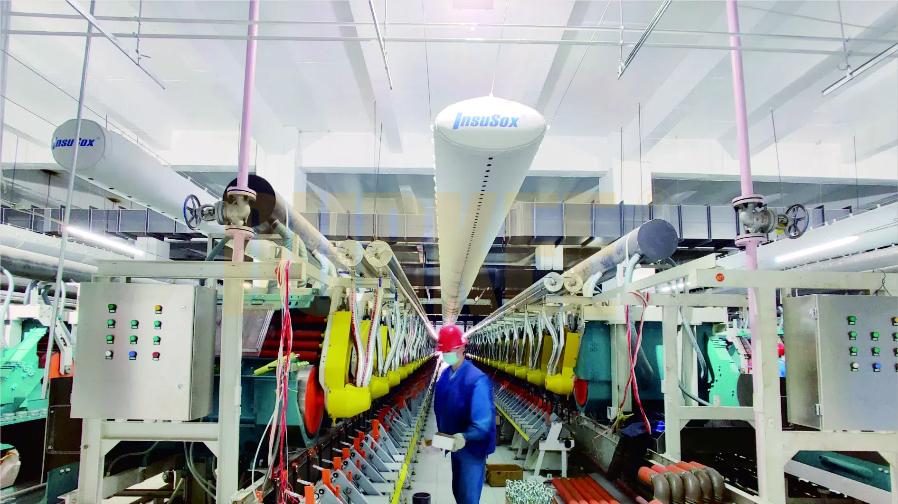 How Durkee Smart HVAC Innovations Take Center Stage at China Refrigeration 2025
How Durkee Smart HVAC Innovations Take Center Stage at China Refrigeration 2025
 Advantages and Prospects of Cloth Air Ducts
Advantages and Prospects of Cloth Air Ducts
 Fabric Duct: Innovator of Flexible Ventilation Systems
Fabric Duct: Innovator of Flexible Ventilation Systems
In the textile industry, maintaining an optimal environment is crucial for ensuring fabric quality, operational efficiency, and worker comfort. The challenge lies in creating a stable climate within manufacturing facilities where humidity, temperature, and air quality are rigorously controlled. Traditional HVAC air duct ventilation systems often fall short, leading to inefficiencies and increased costs. This is where our advanced flexible ductwork solutions come into play, offering significant advantages tailored to the specific needs of the modern textile facility.

Textile production relies on maintaining specific temperature and humidity levels to ensure fabric quality and prevent damage. Traditional metal ductwork often fails to deliver even air distribution, leading to inconsistencies and inefficiencies. Here are some of the key challenges faced in textile manufacturing regarding HVAC/R ventilation ducting.
Humidity Control: Textile manufacturing processes are highly sensitive to humidity levels. Excessive moisture can lead to fiber swelling, which affects the texture and strength of fabrics, while low humidity can cause static issues. Inconsistent humidity control can result in defective products and costly waste while being critical to worker health.
Temperature Regulation: The heat generated from processes such as weaving and dyeing must be managed to prevent the degradation of materials and to ensure a comfortable working environment.
Indoor Air Quality: Textile production produces particulate matter and chemical vapors suspended in the air. Efficient air filtration and ventilation are essential to prevent pollution, ensure product quality, and maintain a clean working environment.
Energy Efficiency: HVAC/R air duct systems often consume a significant amount of energy. Inefficient systems can lead to high operational costs, impacting the bottom line.
Air Distribution: Inconsistent airflow can result in "dead zones" within the facility where temperature and humidity control are suboptimal.
System Maintenance: Traditional metal ducts are susceptible to corrosion, leaks, and other issues that require regular maintenance.
Installation Complexity: Traditional ductwork can be cumbersome to install, often requiring specialized labor and significant downtime.
Durkee addresses these challenges with our advanced flexible air ductwork systems, offering:
Uniform Air Dispersion: Durkee's fabric duct design ensures that airflow is distributed evenly throughout the facility, eliminating hot and cold spots and maintaining a stable microclimate essential for textile manufacturing.
Energy Efficiency: The light weight construction of cloth air ducts, only 2.5% of that of GI ducts, reduces the energy needed for air movement, and the seamless fabric minimizes leakage, contributing to energy savings.
Easy Installation and Maintenance: Cloth ductwork is easy to install and maintain. Its flexibility allows it to be shaped to fit any space, and its design facilitates cleaning and repairs.
Customization: Durkee's fabric ducting system can be customized to fit the unique layout and requirements of any textile facility, from small workshops to large textile plants. Flexibility and tailored designs characterize Durkee.
Sustainability: The use of recyclable materials in fabric ductwork aligns with the growing emphasis on sustainable manufacturing practices.
Chemical Resistance: Durkduct textile air ducts are resistant to chemical fumes and vapors, ensuring durability in textile manufacturing environments.
Noise Reduction: Durkeesox's inherent flexibility helps absorb vibrations and minimize noise transmission, creating a quieter working environment.

As the textile industry continues to evolve, the demand for efficient, sustainable, and customizable HVAC/R ductwork solutions grows. Durkee stays at the forefront of this evolution, offering air duct socks fabric solutions that meet the highest standards of performance and sustainability.
Durkee's commitment to innovation has led to the development of duct sock technology that is not only efficient but also enhances the overall aesthetics of textile facilities, turning functional systems into design features.
The integration of fabric air ducts into textile manufacturing facilities is more than just a ventilation upgrade — it's a strategic decision that enhances productivity, sustainability, and worker satisfaction.
Durkee, as a leading flexible fabric duct manufacturer, provides the textile industry with the tools needed to meet the challenges of today and tomorrow.